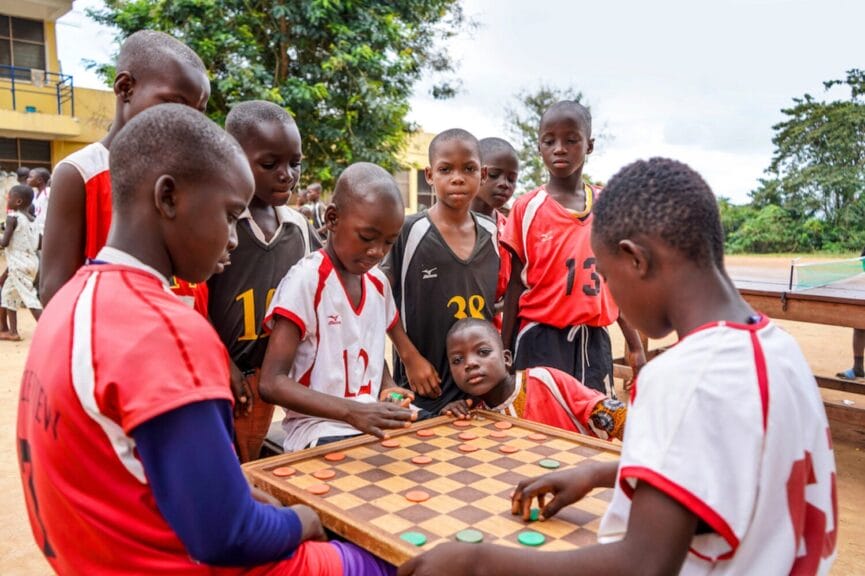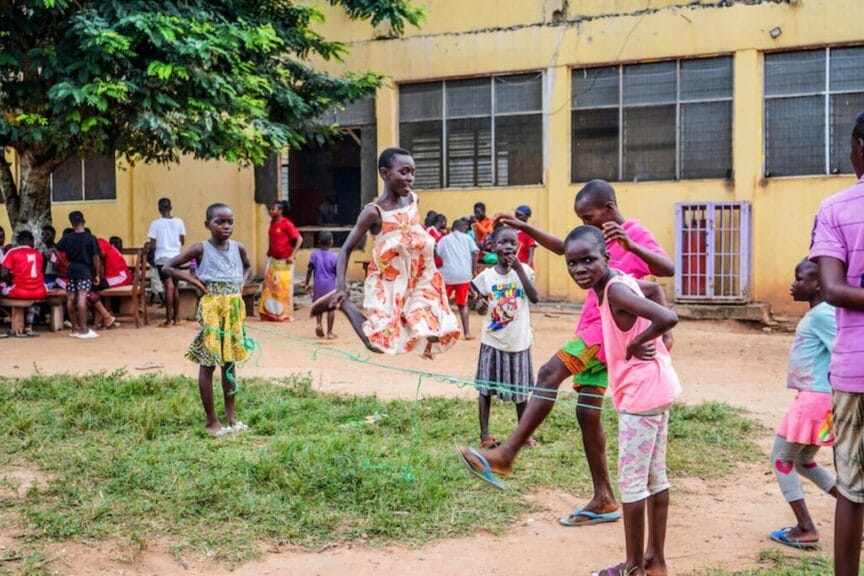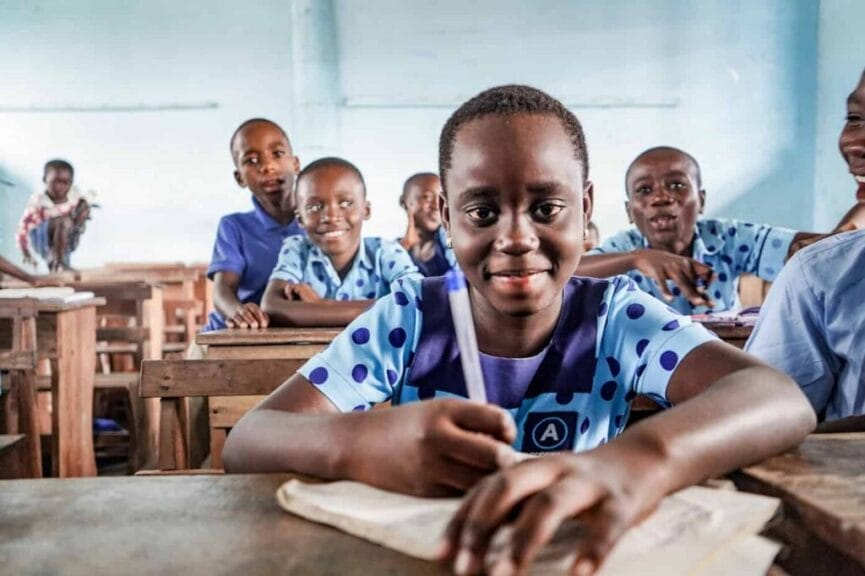Eight-year-old Charity never chose to be a home help. Who would? No school, unrelenting work, minimal food and zero pay. Plus, regular beatings from her sadistic boss.
The choice was her father’s. A contact told him that a woman on Ghana’s Lake Volta was looking for an extra pair of hands around the house. Charity doesn’t know if he got paid. She just knows one day that someone came to take her and her younger sister away. Neither have seen their parents since.
“All day we spent washing and cleaning. Sometimes we’d take food to her husband who fished on the lake,” Charity recalls. “Anything we did wrong, she’d cane us. If she was really annoyed, she’d put ground ginger in our bottoms.”

Charity and her sister are among thousands of children across Ghana who are trafficked every year into forced labour or pushed into abusive work by their parents or guardians. The problem is pervasive across the economy, but particularly endemic in labour-intensive sectors such as farming, mining and fishing.
At the route of the problem is poverty, says Rosemary Afedzie, coordinator at a safe house for rescued children run by the Ghanaian charity Challenging Heights. “The traffickers and middlemen basically deceive the parents by giving them false promises of a luxury life for their children, and because they are poor, they are easily convinced,”she explains. “In other cases, they are in debt bondage and hand over their children to pay off their debts.”

Drawing on tipoffs from members of the community, Challenging Heights identifies children who are trapped in abusive work situations and, together with the police and other authorities, coordinates rescue missions
“Sometimes the slave masters do not want to give up the children, but generally when they see our men in uniform and with arms, they are scared and give them over,” says William Ayaregah, head of the Anti-Human Trafficking Unit of the Ghana Police Service. Most of the 81 children currently in the home, which is located in a spacious, unmarked compound near a rural town about three hours’ drive west of the capital Accra, were collected from fishing communities around Lake Volta in south-central Ghana.
When they arrive, they are typically very traumatised and withdrawn, explains Afedzie, who, like a Ghanaian Pied Piper, always has half a dozen children clinging to her skirt or holding her hand. She’s known affectionately as ‘Madam Panyin’, from the word for ‘elder’ in the local Fante language.
All the children have an adult caregiver assigned to them who we refer to as ‘mothers’ and ‘fathers’ of the house. It’s important for them to have this feeling of being part of a family again

It can make for hard listening, she admits. She never cries in front of the children, but readily admits to going to her room, shutting the door and letting the tears flow. “But then seeing them smile after a few weeks – well, that just makes me so happy and motivates me to push on.”
Medical checks are another priority. The vast majority of children arrive with scabies or other skin diseases: the result of persistently poor hygiene. Rotten teeth, ear infections and blurred vision are also common complaints. Without exception, all are malnourished.
The home, which is built around a large central courtyard with tall dormitory blocks on either side, is equipped with a small sick bay for check-ups and tests. Some need treatment for sexually transmitted diseases, Afedzie explains. It’s not unknown for girls to arrive pregnant either.
Even so, Madam Panyin appears to be right: it’s not long before smiles reappear. Separated from traffic and nearby neighbours, the prevailing sound is that of children giggling at cartoons in the upstairs TV room or running around in the courtyard.
A huge poster across one full wall of the administrator’s offce captures the general joy of the place. It shows dozens of pictures of grinning children in smart school uniforms, some chatting away at the dinner table (“jollof rice is their favourite”), some at their desks in one of the half dozen classrooms, and, in a few lucky cases, some collecting gifts from a bushy-bearded Santa Claus during a Christmas party.
“All the children have an adult caregiver assigned to them who we refer to as ‘mothers’ and ‘fathers’ of the house,” Afedzie explains. “It’s important for them to have this feeling of being part of a family again.”
It’s not all plain sailing. Some take longer than others to settle in. Fights break out from time to time. To teach the children that “hands are not for hitting”, they’re encouraged to draw and do hand-printing. The anecdotal evidence seems positive: blotched palms and fingers in bright colours adorn almost every wall.
Separated from traffic and nearby neighbours, the prevailing sound is that of children giggling or running around in the courtyard
When times are tough, Mohammed – a cheerful 12-year-old – thinks of his grandmother. At an early age, he was put to work by his own father on the family fishing boat. His granny is the only fond memory he has from an otherwise grim and violent childhood. “With her,” he says matter-of-factly, “I feel safe.”
But the day will come when Mohammed needs to move on. The same is true for the more than 1,800 children who have passed through the centre since it was set up in 2012. Even if they wanted the children to stay, resources prevent it: the home costs around US$500,000 (£400,000) a year to run and Challenging Heights is entirely funded by donors.
But keeping them there is not the objective anyway. Once the children are considered rehabilitated, which can take anywhere from six months to two years, the idea is to resettle them back into the community. The policy is rooted in the story of the charity’s own founder, James Kofi Annan. Himself a child slave on Lake Volta, Annan was trafficked as a six-year-old and spent the next seven working in remote fishing communities around the lake. Three of the five children who were trafficked with him never lived to tell their tale.
But Annan did. After finally escaping aged 13, he had a single goal: to return home and get an education. Initially, he taught himself to read and write from pre-school books, before going on to school and then eventually to university.

After graduating with a master’s degree, he landed a job at Barclay’s Bank of Ghana, but gave it up to set up Challenging Heights. Since then, he’s dedicated himself to helping survivors like himself, picking up numerous international awards for his anti-trafficking efforts in the process.
As for the reintegration of the centre’s present-day charges, the ideal is for them to return to their parents, Afedzie explains. If that’s not possible, either because they can’t be located or because the risks of re-abuse are too high, efforts are made to place them with a relative or family friend. Failing that, Challenging Heights works with the relevant state agencies to find adopted homes for them.
For now, the future for Mohammed is uncertain. His grandmother is already looking after two of his younger siblings and is judged to be too old to have a lively pre-teen in her care. He is philosophical: wherever he ends up, he reasons, it can’t be worse than returning to the home he grew up in.
And his hopes for when he’s older? “I’d like to earn lots of money,” he says. “That way, I can help other children who face hardships.
Photography: Challenging Heights
This article was originally published on Positive.news and was republished here, with permission, under a CC BY-ND 4.0 license. Learn more about third-party content on ZanyProgressive.com.




